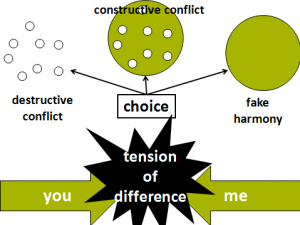“Just Say NO”
I LOVE FAKE HARMONY.
I am a master of manipulating a situation so that “everyone stays calm”. If I am not careful this will happen in all parts of my life. Work, family, friends. This is a learned behavior and a natural result of growing up in an alcoholic home. In a war-zone. If you upset the apple cart in my childhood home; all hell is going to break lose.
Classic: Don’t Talk…Don’t Feel…Don’t Trust….
However, fake harmony is the enemy of setting boundaries. As I reflect on my life and the experiences I have had with families in the throes of a loved one’s addiction, I come to some pretty clear conclusions:
Setting boundaries is essentially the art of saying NO. Every boundary is essentially a form of saying NO. Sometimes very straight-forward:
“Can I borrow $100″… “NO you cannot”…
Sometimes it’s not as direct.
For example, a family member who drinks too much becoming verbally abusive when they drink… The boundary maybe you leave or it maybe they leave. But essentially it comes down to NO..
”You can’t treat me that way”…
So… what gets in the way of the boundary.
It’s not “what” to do. Most of the time we know that we should say NO. It’s “how” do we do it. Or maybe more accurately…why can we not do what is so obviously necessary and set this boundary?
1.) FEAR: We operate from fear of what is going to happen if we say no. We have scenarios that detail what is going to happen and we play them over in our mind. Fear controls us.
2.) JUST SAY YES: We plan on saying NO but in the moment, we allow the person to bully us into saying YES. They use intimidation, manipulation, and sometimes subtle techniques to keep us from saying NO. Example, give you the cold shoulder. Example, get you off task talking about other issues. Example, debate you to death. You give in just to shut the other person up and have some peace.
3.) PLEASE LOVE ME: We want the person to love us…or at least like us. So, we say YES as a way to not lose love and affection. In these cases, we tend to keep talking even after the boundary is set because we want the person to be happy about the boundary is set and life to be wonderful. They aren’t going to be happy. You just told them NO.
4.) I DID IT: Straight up guilt… We tell ourselves “it’s our fault”. The guilt clouds the rational decision making.
I’m a big fan of number 3… I need everyone I care about to like me and I need there to be peace in all my personal relationships. The reason being, I grew up in a home where unrest, discord, tension, resulted in really bad things. For me there is no in between.
Everyone is happy and everything is either really good…or the stuff is about to hit the fan.
In essence, I was always afraid of “destructive conflict” because I never knew there was “constructive conflict”. My response was to manage the situation and use my people skills to avoid direct confrontation. Of course, this approach has a short shelf life. It is unsustainable.
Constantly ignoring your own feelings does not change the reality of the situation.
How do you set boundaries in the face of these underlying issues. I would propose the following:
1.) For the fear based boundary challenges: There is a technique called “fear setting”. This is not for everyone because it can be a heavy duty emotional exercise. Fear setting involves getting in touch with the “worst case scenario” and trying to “sit in” the experience. Using guided imagery you can walk yourself through a mental exercise where the worst case scenario is played out. The idea being, if you can face this fear. You can set and maintain the boundary.
2.) For the “debater” and the “intimidator” challenges: The technique is called “hit and run”. Also structure the conversation. Make sure you have the conversation under conditions that naturally limit time for “discussion”.
Over the phone so you can employ the “I have to go now” technique. Or set the expectation at the beginning that you can only talk briefly. Be careful not to set the boundary talk in a circumstance where you can be held hostage. You don’t want to be a captive audience and enter in an extended debate concerning these issues.
3.) For the “we want them to love us” challenge: The technique is called “suffer in silence” and essentially boils down to this: learn to stop talking. How do you get comfortable with something that is initially uncomfortable? You “sit in” or “lean in” to the experience.
Try and be grateful for the opportunity to “learn from this discomfort”. You have to re-frame the experience in a way that is positive. If you don’t you will instinctively run from the uncomfortable feelings. Feelings will not kill you. Feelings will not physical harm you. Feelings will pass. Practice and keep track of improvement in this area.
Eventually you will become a boundary setting NINJA!
Like my beloved Melissa. She can drop the hammer and slice you up with a boundary and you don’t even know what hit you.
4.) How to handle guilt:
Here is a Rich Jones original method for addressing guilt.
It involves confronting the irrational thinking involved in your assessment of the situation. Journaling can be very useful. At the top of the page write out the boundary.
Example: “I just told Rich “no” to paying for his rent another month”.
Followed by: This makes me worthy of guilt because…. And let the words flow.
Get into a process of free association around this topic. Then put the journal down. Go for a 5-minute break and come back and read your reasons for feeling guilty. Let me know if the reasons are rational!!! This will condition your brain to confront the irrational thoughts associated with feeling of guilt.
Remember, setting boundaries is a skill. Or maybe more accurately, a habit. A habit is merely a behavior we engage in on a repeated basis. If you practice this skill you will get better and better at setting boundaries.
It may never be easy. But it will become manageable.






